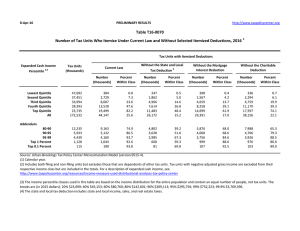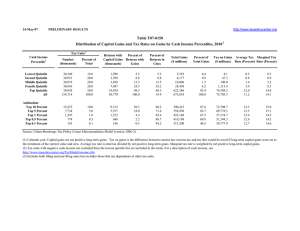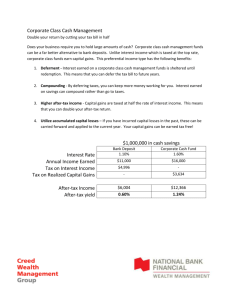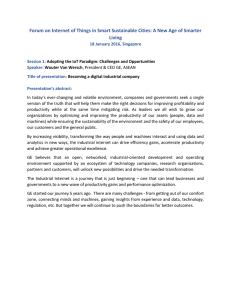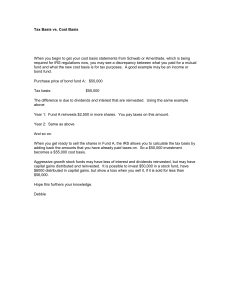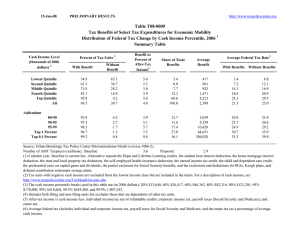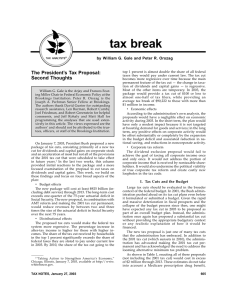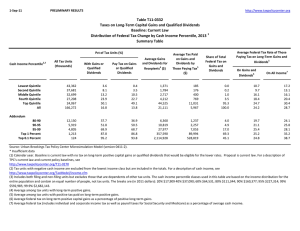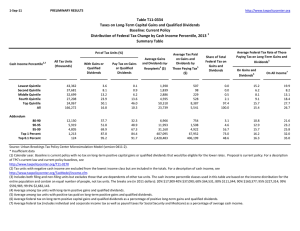Exempting Dividends, Interest, and
advertisement
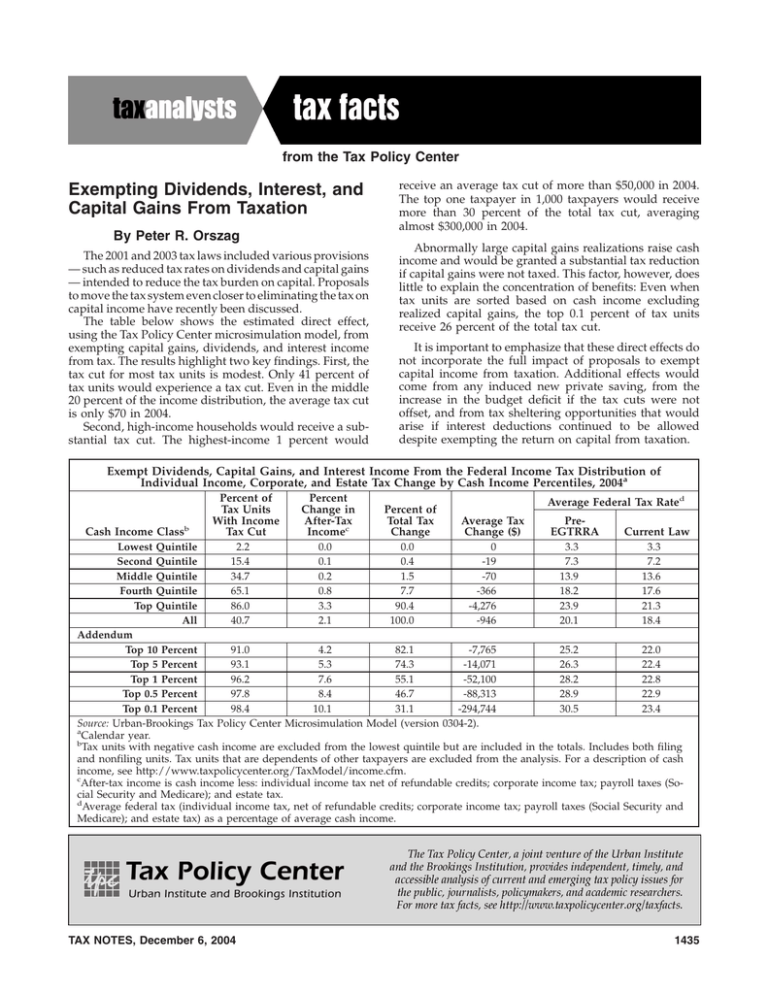
from the Tax Policy Center Exempting Dividends, Interest, and Capital Gains From Taxation By Peter R. Orszag The 2001 and 2003 tax laws included various provisions — such as reduced tax rates on dividends and capital gains — intended to reduce the tax burden on capital. Proposals to move the tax system even closer to eliminating the tax on capital income have recently been discussed. The table below shows the estimated direct effect, using the Tax Policy Center microsimulation model, from exempting capital gains, dividends, and interest income from tax. The results highlight two key findings. First, the tax cut for most tax units is modest. Only 41 percent of tax units would experience a tax cut. Even in the middle 20 percent of the income distribution, the average tax cut is only $70 in 2004. Second, high-income households would receive a substantial tax cut. The highest-income 1 percent would receive an average tax cut of more than $50,000 in 2004. The top one taxpayer in 1,000 taxpayers would receive more than 30 percent of the total tax cut, averaging almost $300,000 in 2004. Abnormally large capital gains realizations raise cash income and would be granted a substantial tax reduction if capital gains were not taxed. This factor, however, does little to explain the concentration of benefits: Even when tax units are sorted based on cash income excluding realized capital gains, the top 0.1 percent of tax units receive 26 percent of the total tax cut. It is important to emphasize that these direct effects do not incorporate the full impact of proposals to exempt capital income from taxation. Additional effects would come from any induced new private saving, from the increase in the budget deficit if the tax cuts were not offset, and from tax sheltering opportunities that would arise if interest deductions continued to be allowed despite exempting the return on capital from taxation. Exempt Dividends, Capital Gains, and Interest Income From the Federal Income Tax Distribution of Individual Income, Corporate, and Estate Tax Change by Cash Income Percentiles, 2004a Cash Income Classb Lowest Second Middle Fourth Top Quintile Quintile Quintile Quintile Quintile All Percent of Tax Units With Income Tax Cut 2.2 15.4 34.7 65.1 86.0 40.7 Percent Change in After-Tax Incomec 0.0 0.1 0.2 0.8 3.3 2.1 Percent of Total Tax Change 0.0 0.4 1.5 7.7 90.4 100.0 Average Federal Tax Rated Average Tax Change ($) 0 -19 -70 -366 -4,276 -946 PreEGTRRA 3.3 7.3 13.9 18.2 23.9 20.1 Current Law 3.3 7.2 13.6 17.6 21.3 18.4 Addendum Top 10 Percent 91.0 4.2 82.1 -7,765 25.2 22.0 Top 5 Percent 93.1 5.3 74.3 -14,071 26.3 22.4 Top 1 Percent 96.2 7.6 55.1 -52,100 28.2 22.8 Top 0.5 Percent 97.8 8.4 46.7 -88,313 28.9 22.9 Top 0.1 Percent 98.4 10.1 31.1 -294,744 30.5 23.4 Source: Urban-Brookings Tax Policy Center Microsimulation Model (version 0304-2). a Calendar year. b Tax units with negative cash income are excluded from the lowest quintile but are included in the totals. Includes both filing and nonfiling units. Tax units that are dependents of other taxpayers are excluded from the analysis. For a description of cash income, see http://www.taxpolicycenter.org/TaxModel/income.cfm. c After-tax income is cash income less: individual income tax net of refundable credits; corporate income tax; payroll taxes (Social Security and Medicare); and estate tax. d Average federal tax (individual income tax, net of refundable credits; corporate income tax; payroll taxes (Social Security and Medicare); and estate tax) as a percentage of average cash income. TAX NOTES, December 6, 2004 1435
